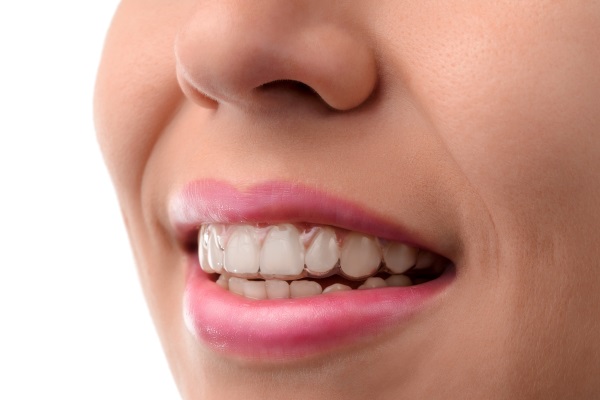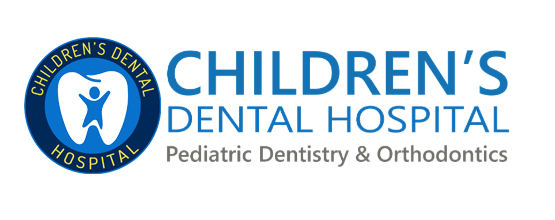
What is Invisalign®?
The Invisalign® system consists of a number of removable clear plastic aligners, not brackets that are placed in both the lower and upper jaws to straighten an individual’s teeth. These clear braces do not need to be attached to your teeth. As a result, they can be easily removed for brushing, eating or speaking. CDH provides you with a set of clear aligners. They must be worn for a period of approximately two weeks. Since the aligners exert force on your teeth, they allow movement for the correction of teeth overbite, underbite, crossbite and close gaps in between your teeth. Once the aligners have been used for two weeks, they will be replaced with a new set of aligners. With this system, you will be given a new set of aligners every two weeks, until your teeth have been straightened. The last set of aligners may be used as retainers to keep your teeth from shifting back, it is best to ask your orthodontist for clarification on this.
Getting it
It is much simpler to use it than wearing braces. This is due to the contribution of CAD / CAM equipment and software. The procedure for the fabrication of the aligners is described below:
How are Invisalign® installed?
The installation process is described below. Modern techniques now allow for this entire process to be completed in one visit.
- Initial Consultation – There are two components of the consultation process. Our board certified orthodontist will first conduct an examination in order to determine whether you will be able to benefit from this system. If he thinks that this system can help you, he will determine whether to prescribe the teen or adult Invisalign®. At this point, you will be able to express concerns or ask questions about the length of treatment, price and the possibility of viewing a simulation of how your smile will look after treatment.
- Evaluating your Records – The next part of the process is to have a discussion about your teeth. The following steps are taken:
- Impression and Digitization – An accurate, current impression of your teeth is taken. This is done using impression putty. Once the putty hardens, it is digitized using a computer with specialized software. If the facilities are available, an even better approach is to directly read 3-D optical data from your mouth directly into the computer.
- Bite registration – The second step of the process is to make a bite record of the patient.
- Dental x-rays – The next step in the process is to take X-rays, which will facilitate an assessment of jaw bone health and tooth root positioning by your oral surgeon. This may include a full-mouth series of x-rays, a panoramic x-ray or both.
- Photographs – A number of patient pictures are required. This includes front and side close-up pictures of your smile, regular front and side photos and lower and upper dental arch close-ups. These data as well as the dentist’s recommendations will be forwarded to the company.
- Treatment simulation – The technology staff will then generate an on-screen simulation which shows your teeth through the various realignment stages. The simulation will be returned to CDH for any advice on possible amendments or a final approval by Dr. Kaufman. This also allows you to look at the simulation and how it will affect the final position of your smile.
- Manufacture and delivery – When we have approved the treatment, it will use computer-aided manufacturing (CAM) to fabricate your aligners. They will be delivered to you by our dentists.
- Length of treatment – The individual’s particular requirements determines the total treatment duration. Treatment usually extends over at least a one year period. In general, the treatment will be more than one year. It is recommended that each aligner is worn for approximately two weeks, for as many hours as possible.
The Invisalign® Advantage
The invisible braces system teeth alignment system was developed by an IT engineer who wanted a method that did not require the large number of adjustment visits that were necessary with traditional braces.
Some of the benefits of using:
- Invisibility – Since they are made using clear, medical grade plastic, they cannot be seen by the naked eye.
- Removable – An attractive feature of this system is that it is possible for the wearer to remove the aligners themselves. They must be removed for both cleaning and eating. Another advantage is that it possible for the user to put on their own new aligners. It, therefore, eliminates a trip to the dentist’s office.
- Cleaning – They can be cleaned easily, since they do not have to be removed. As a result, they support regular oral health measures such as flossing and brushing.
- Cheaper than lingual braces – Leading edge technology is utilized for the manufacturing and treatment planning of aligners. While they cost more than standard braces, they are more economical to purchase than lingual braces.
- Safety – There are many sharp edges in traditional braces due to their metallic wires. By contrast, these aligners have no sharp edges since they are made from plastic.
- Reduced Damage to Teeth and Gums – Since traditional metal braces are hard to clean, they may result in gum disease and demineralization.
- Duration of Treatment – The timeframe treatment is normally much shorter than with traditional braces.
- You Know What to Expect – The outcome of treatment can be previewed through the use of a screen simulation.
How to take Care
It is necessary to take proper care of your orthodontics system in order to ensure a beautiful smile. If this is not done, it is possible for the aligners to carry bacteria and that can result in gum disease and cavities. Taking care of them is very simple. The only necessary steps are to keep the aligners and your mouth clean at all times.
Here is a list of do’s and don’ts.
- Do:
Clean your Aligners – It is necessary to remove your clear aligners and to brush them gently. This is essential because dry saliva and plaque can cause the formation of bacteria. They must be soaked in special solutions that are specifically designed to sanitize and rinse them. It is also possible to use lukewarm water to wash them. They should never be cleaned using boiling water. This could distort them so that they no longer fit in your mouth.
-
- Oral Hygiene Maintenance – It is important to brush and floss your teeth before re-inserting your aligners. This will prevent particles from being trapped which can gum disease and decay.
- Travel Precautions – You should carry your previous and next set of aligners with you when you travel. This will ensure that you have them, if they are lost or damaged.
- Don’ts:
- Foods to Avoid – They should not be worn when drinking (except water) or eating.
- Do not Use Toothpaste on Aligners – It is important to never use toothpaste when you are using them. Some toothpastes have whitening agents which can discolor the aligners as well abrasives which can scratch them. They should not be exposed while eating. They should also be soaked in the proper solutions.
- Don’t Drop Them – It is important not to drop the aligners. This is because they are relatively fragile, and can fracture if they are accidentally. dropped. They should always be stored in a safe location where they will not fall. Since they are removed during sports activities, mouthguards might not be necessary.
Cost of aligners
There can be considerable variation in the cost of Invisalign® aligners. The cost is usually based on the necessary misalignment correction that will be required. The treatment cost at CDH ranges between $5000 and $6000. A price estimate for the treatment can be provided at the consultation. It is possible that a portion of the costs could be covered by dental insurance. There are certain insurance plans that cover it just like other orthodontic treatment, including traditional braces. Part of the expenses towards getting the aligners may be covered under insurance.
Aligners for Children
If you live in or near Brooklyn or other New York boroughs, your best option for your children’s orthodontic treatment, is to visit us at CDH. Dr. Kaufman leads a team of highly qualified orthodontists and pediatric dentists who’ve been providing affordable orthodontic treatment services to Brooklyn residents for many years. CDH is here to meet all of your child’s dental care needs. We are on Ocean Avenue, and corner of Kings Highway, across the street from the Brooklyn Public Library. Our second location is on on Myrtle Avenue, and corner of Emerson Place, near Classon Avenue stop on the G Line.

